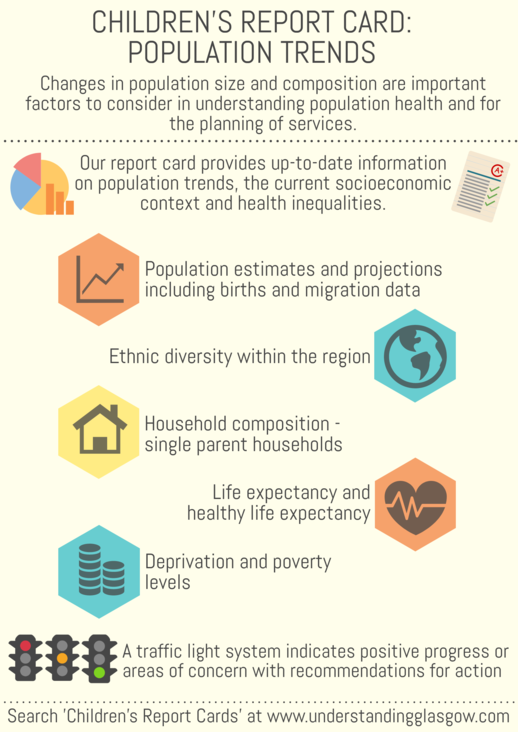Population trends and health inequalities
Changes in population size and composition are important factors to consider in understanding population health and for planning services. New policy priorities are being pursued by the Scottish Government, including the expansion of early years preschool care and the focus on eradicating child poverty in Scotland. Services are changing as result. At the same time austerity, UK welfare reform policy, and the roll-out of Universal Credit threaten to have negative impacts on child wellbeing – recent projections suggest that child poverty could rise to 38% by 2031.
Health inequalities are the unjust and avoidable differences in people’s health across the population. Reducing health inequalities is a major focus of health and government policy in Scotland.
This report card describes patterns and trends in a range of demographic, socioeconomic and health indicators that tell us about how the children’s populations of local authorities in the Glasgow City Region are changing.
The indicators include: births; population estimates; migration; population projections; ethnic diversity; asylum seekers and refugees; household composition; life expectancy; healthy life expectancy; children living in deprived areas; and children in poverty.
The indicator trends referred to in this report card are available as graphs (PDF).

